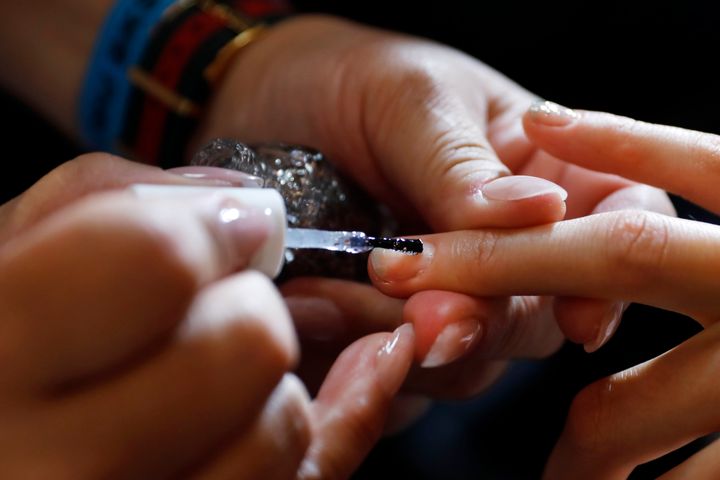
We’ve written before at HuffPost UK about the surprising things your nails can reveal about your health.
For instance, a brown stripe running vertically down your nail can sometimes belie a rare type of skin cancer.
On the slightly less medically serious side, however, Dr. Donald Grant ― a GP and the senior clinical advisor for The Independent Pharmacy ― told HuffPost UK that some skin conditions can be spotted on the nail, too.
“Psoriasis is an extremely common autoimmune condition that cannot be prevented. It comes in many forms and leaves skin itchy, irritated and inflamed,” the doctor said.
“Understanding the telltale signs of psoriasis is vital for ensuring early treatment is provided to minimise flare-ups,” he added.
So how does it show up on your nails?
According to Dr. Grant, “Nail psoriasis is a common type of skin condition affecting around half of those suffering from psoriasis, according to the NHS.”
To spot it, the doctor advises we look out for “nail pitting ― when small dents or pits form on the surface of fingernails or toenails.”
“It impacts appearance and the fragility can make nails crumble in severe cases,” he added.
Though crumbling nails are classified by the NHS as “severe,” Dr. Grant says even milder nail psoriasis can affect your day-to-day life.
“Pitted nails can impact work and social lives, making writing or typing challenging while affecting people’s confidence,” he explained.
What should I do if I suspect nail psoriasis?
The doctor says, “If your nails have changed in appearance or texture, it’s always best to seek further advice from a GP.”
That’s true whether or not you think the changes come from psoriasis.
The Psoriasis and Psoriatic Arthritis Alliance (PAPAA) adds that while the condition can affect both fingernails and toenails, “For some unknown reason fingernails are more often involved than toenails.”
Though PAPAA says “Nail psoriasis is perhaps the most difficult part of psoriasis to treat,” they add that keeping your nails short, avoiding cleaning them with a sharp object or nail brush, and even using steroidal creams if prescribed can help.